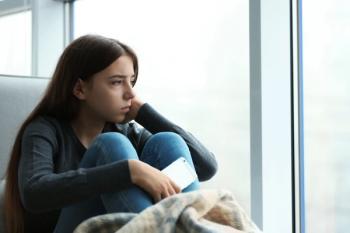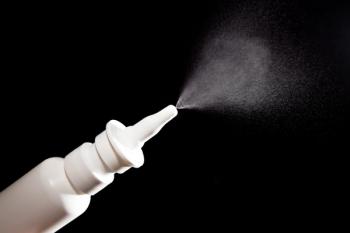
- Vol 32 No 6
- Volume 32
- Issue 6
The Latest on Treatment-Resistant Depression
Findings on mood disorders, and the disability associated with it, speak to the need for effective treatments for depression.
BRIEF COMMUNICATION
Depression is well established as a major cause of morbidity and mortality worldwide. It is associated with a markedly shorter life span and an increased risk for several major medical disorders, including cardiovascular disease, cerebrovascular disease, and diabetes. Moreover, depression is associated with a much worse outcome in terms of disease severity and mortality. These findings, the high suicide rate associated with mood disorders, and the disability also associated with this common disorder speak to the need for effective treatments for depression.
[[{"type":"media","view_mode":"media_crop","fid":"38664","attributes":{"alt":"Treatment-Resistant Depression","class":"media-image media-image-right","id":"media_crop_1309313067066","media_crop_h":"125","media_crop_image_style":"-1","media_crop_instance":"3868","media_crop_rotate":"0","media_crop_scale_h":"0","media_crop_scale_w":"0","media_crop_w":"181","media_crop_x":"94","media_crop_y":"52","style":"width: 150px; height: 103px; float: right;","title":" ","typeof":"foaf:Image"}}]]Unfortunately, studies such as Sequenced Treatment Alternatives to Relieve Depression (
Subsequent studies have revealed similarly low remission rates in patients who received previously demonstrated effective evidence-based treatments, including CBT and antidepressants.1,2 What is clearly lacking in our field, unlike for example, oncology or infectious disease, are predictors of antidepressant response to specific antidepressants or psychotherapy in individual patients. Hopefully, a combination of genetic, epigenetic, and functional imaging techniques will provide such a tool. The field is now plagued with a meager database to guide us in managing patients in whom an antidepressant trial has failed.
Here I describe assessment and treatment strategies for treatment-resistant depression (TRD).
Diagnosis
First and of foremost importance is to confirm the diagnosis-does the patient fulfill criteria for MDD? Is there any evidence of bipolarity? Is there a family history of unipolar or bipolar disorder? Does the patient fulfill diagnostic criteria for other psychiatric disorders, including (but not limited to) an anxiety disorder, eating disorder, late luteal phase dysphoric disorder? Has a major medical disorder been ruled out by laboratory testing, which should include thyroid function tests and measurements of testosterone and vitamins D and B12 levels?
Has a thorough neurological examination been performed to rule out early Parkinson disease, Lewy body disease, and frontotemporal degeneration? Has neuropsychological testing been obtained to assess cognitive function? Is the disorder being treated with any medication that is associated with depression as a known adverse effect, such as glucocorticoids or alpha interferon? If the patient has never had a structural brain imaging study done using MRI, it should be seriously considered to rule out any occult CNS disorders. Depending on presentation of symptoms, sleep polysomnography may be used to rule out sleep apnea and other sleep disorders, and an electroencephalogram should be considered to rule out various forms of epilepsy.
Treatments
Once major medical disorders are ruled out, the clinician must decide on a course of treatment. Treatments for which there is considerable evidence of efficacy include switch, combination, and augmentation strategies. If the patient is currently being treated with one of the SSRIs, as is most commonly the case, it is of paramount importance to determine whether he or she has had a partial response (improvement of 20% to 30%) or no response at all. If the former, a combination or augmentation strategy makes the most sense; if the latter, a switch to another antidepressant class (eg, SNRI, MAOI) should be considered.
There is some evidence that
Common strategies include switching from an SSRI to an SNRI, bupropion, mirtazapine, an MAOI, or a TCA. A combination of an SSRI with either mirtazapine or bupropion has been reported to be effective. Augmentation with triiodothyronine (25 to 50 μg/d), lithium, or one of several atypical antipsychotics (aripiprazole, risperidone, quetiapine, or olanzapine) has also shown efficacy. Both lurasidone and quetiapine have been FDA-approved for the treatment of bipolar depression. There is substantial evidence that for both unipolar and bipolar depression, psychotherapy (CBT and interpersonal psychotherapy) combined with optimal pharmacotherapy is effective.
It is also of interest to include a brief consideration of nonpharmacological somatic treatments, including repetitive transcranial magnetic stimulation, FDA-approved for patients in whom 1 (but not more than 1) SSRI trial has failed; ECT, generally regarded as the most effective of all treatments; and deep brain stimulation, an experimental treatment available at a few academic centers for the most refractory patients. There is also considerable interest in ketamine in TRD, although concerns about substance abuse liability and long-term efficacy remain.
This article was originally posted on May 15, 2015 and has since been updated.
Disclosures:
Dr Nemeroff is Professor and Chairman, department of psychiatry and behavioral sciences, Leonard M. Miller School of Medicine, University of Miami in Miami, Florida. This article is based on “Management of Treatment-Resistant Depression: The Art and the Science,” an interactive session at APA 2015, chaired by Dr Nemeroff.For the author's financial disclosure, please click
References:
1. Kornstein SG, Pedersen RD, Holland PJ, et al. Influence of sex and menopausal status on response, remission, and recurrence in patients with recurrent major depressive disorder treated with venlafaxine extended release or fluoxetine: analysis of data from the PREVENT study. J Clin Psychiatry. 2014;75:62-68.
2. Garlow SJ, Dunlop BW, Ninan PT, Nemeroff CB. The combination of triiodothyronine (T3) and sertraline is not superior to sertraline monotherapy in the treatment of major depressive disorder. J Psychiatr Res. 2012;46:1406-1413.
3. Cristancho MA, O’Reardon JP, Thase ME.
Articles in this issue
over 10 years ago
Introduction: Reflections on the Crossing of Cultures in Psychiatryover 10 years ago
A Tour de Force of the History of Psychiatryover 10 years ago
New Findings About Youth Suicideover 10 years ago
Clinical Considerations in Renal Failure, Depression, and Deliriumover 10 years ago
Can Climate Be Hazardous to Your Mental Health? A View From Historyover 10 years ago
The Most Widely Prescribed Med for Medicare Recipients?Newsletter
Receive trusted psychiatric news, expert analysis, and clinical insights — subscribe today to support your practice and your patients.














